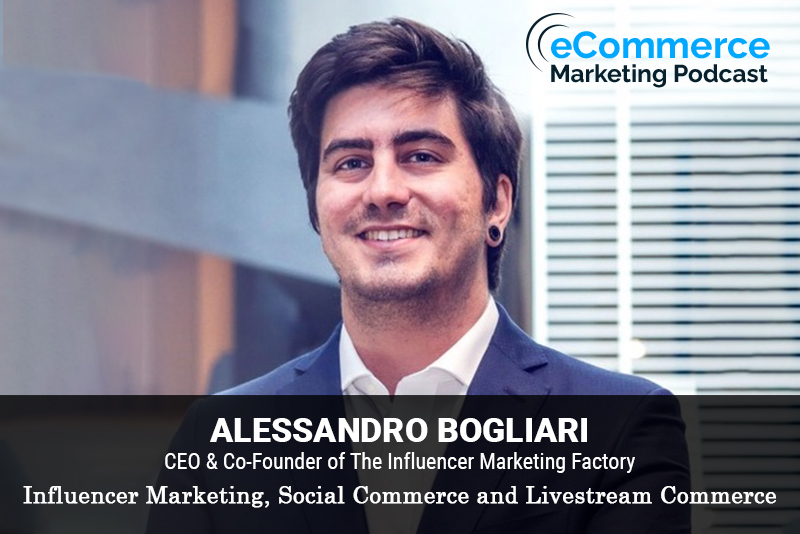
The eCommerce Marketing Podcast walks you through everything that goes into ecommerce marketing — from inbound marketing to paid advertising to conversions. Learn the strategies top marketing experts use to grow their businesses.
Alessandro Bogliari is the CEO & Co-Founder of The Influencer Marketing Factory, a global influencer marketing agency that helps brands engage with Gen Z and Millennials on TikTok, Instagram and YouTube.
In this episode, you will learn
A case study where influencer marketing significantly boosted an ecommerce business
How can ecommerce brands identify the right influencers for their products or services
What strategies would you suggest for small ecommerce businesses with limited budgets to leverage influencer marketing
How influencer marketing helps in engaging with Gen Z and Millennials and how should messaging be tailored for these demographics
Challenges and pitfalls ecommerce brands should avoid in influencer marketing
The future of ecommerce and influencer marketing
For show transcript and past guests, please visit https://www.ecommercemarketingpodcast.com
Or on YouTube at:
https://www.youtube.com/channel/UC3PgT0NOGzpdPGQtBK0XLIQ
Follow Arlen:
Twitter: https://twitter.com/askarlen
Facebook: https://www.facebook.com/arlen.robinson.7
Instagram: https://www.instagram.com/arlenyohance/
LinkedIn: https://www.linkedin.com/in/arlenrobinson/
Past guests on the ecommerce marketing podcast include Neil Patel, Nemo Chu, Luke Lintz, Luke Carthy, Amber Armstrong, Kris Ruby and many more.
Thanks for listening. Be sure to subscribe and leave a review.

Title: Unlocking the Power of Influencer Marketing with Alessandro Bogliari
Guest: Alessandro Bogliari, CEO & Co-Founder of The Influencer Marketing Factory
Host: Arlen Robinson
In this episode of the Ecommerce Marketing Podcast, host Arlen Robinson speaks with Alessandro Bogliari, the CEO & Co-Founder of The Influencer Marketing Factory. Alessandro shares his journey from academia to founding a leading influencer marketing agency, and provides deep insights into how influencer marketing can drive success for e-commerce businesses.
Key Takeaways:
- [2:50] Alessandro’s Background:
- Alessandro’s journey started nine years ago with his master thesis on influencer marketing, which led to the founding of The Influencer Marketing Factory.
- [7:10] Case Studies in Influencer Marketing:
- Example 1: Springfree Trampolines – Highlighting ease of setup and emotional impact led to significant sales increases for high-ticket items.
- Example 2: Pura Fragrances – Showcasing daily use and emotional benefits helped drive conversions for smaller, everyday items.
- [15:25] Finding the Right Influencer:
- Look beyond vanity metrics like followers and views. Focus on demographics, historical data, and past performance with promo codes and sales.
- [22:30] Strategies for Small Businesses:
- Start small by doing your own influencer outreach and negotiations. Use affordable influencer marketing platforms for discovery and tracking.
- [30:10] Challenges and Pitfalls in Influencer Marketing:
- Avoid putting all your budget into one influencer. Diversify to mitigate risks. Understand that influencer marketing is not immediate; it’s a longer-term strategy.
- [38:40] The Future of Influencer Marketing:
- Emerging trends include social commerce and live stream shopping, with a focus on making the purchasing process smoother and more integrated into social media platforms.
Guest Info:
- Alessandro Bogliari
- CEO & Co-Founder of The Influencer Marketing Factory
- LinkedIn: Alessandro Bogliari
- Podcast: The Influence Factor
- Website: The Influencer Marketing Factory











